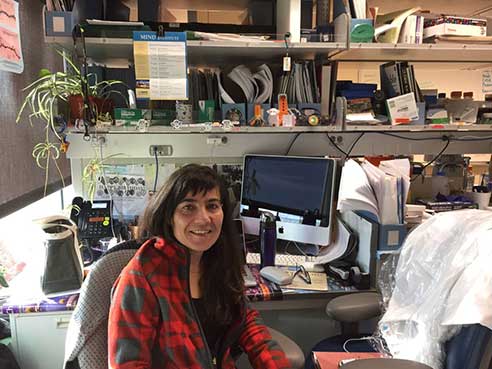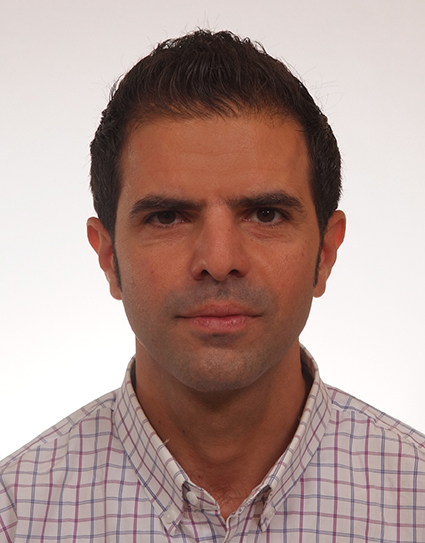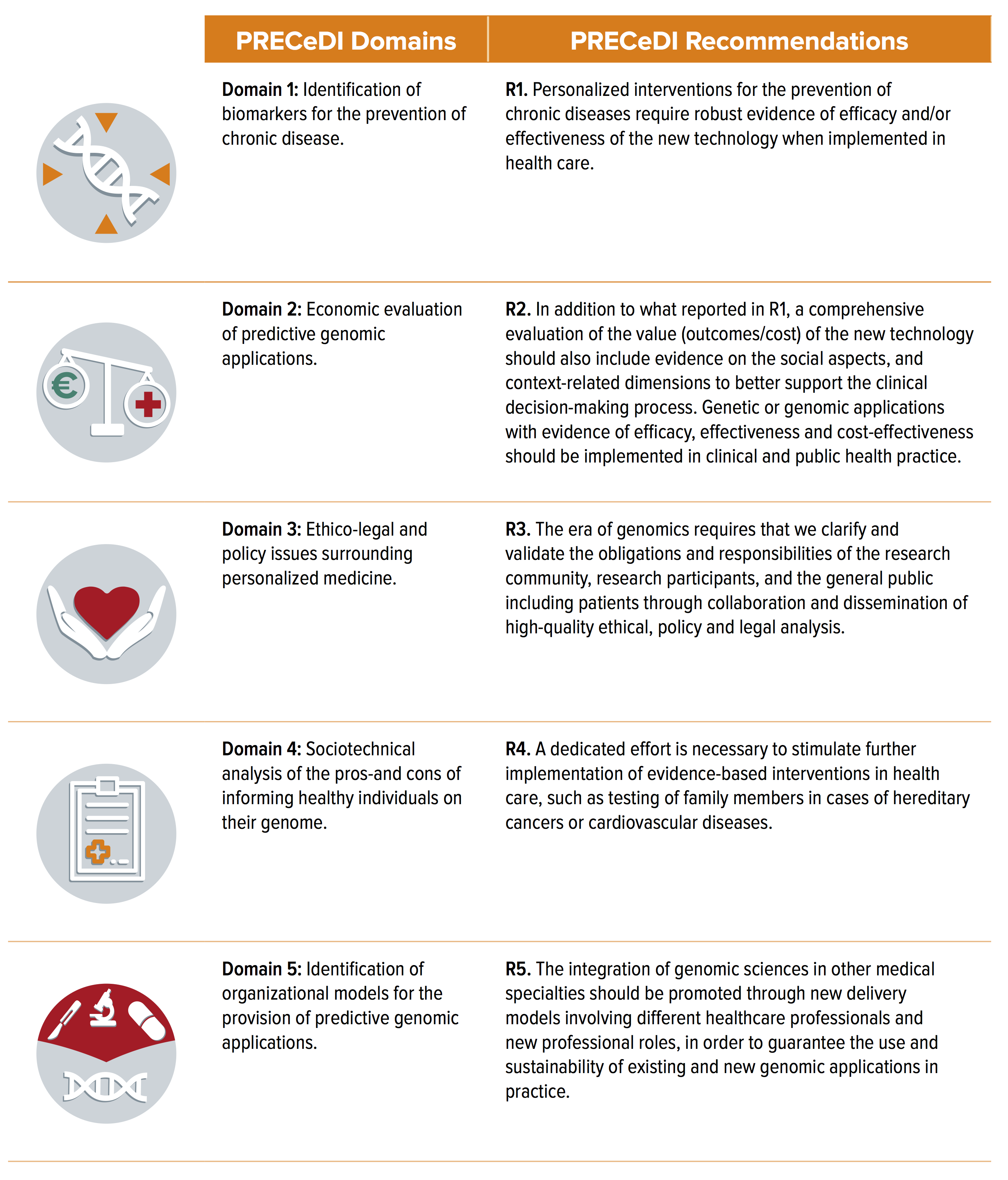NEWSLETTER
Celia Arroyo-López shares her experience about being bullied by her PhD supervisor and her employer.

“ THERE ARE MANY VICTIMS, WE JUST NEED TO BECOME VISIBLE”
Celia Arroyo-López, in her own words
I am from Spain. I earned my PhD in the search for nutritional and medical plants to use in green husbandry to treat gastrointestinal nematodes. Since then, I decided to investigate the potential application of parasitic molecules in the field of biomedicine for the treatment of autism. A part of my PhD was funded by my Marie Curie Sainfoin Project: Healthy Hay (MRTN-CT-2006035805).
Concern about bullying has been growing in the world of academia. PhD students are considered to be particularly vulnerable because they depend on their supervisors for publications and references, according to the Guardian. The newspaper published a call for testimonies encouraging academic staff to share their experiences.
Another article published by Nature notes that nobody knows how much bullying goes on in science because few people have investigated the issue.
The same article defines bullying as repeated and malicious mistreatment of someone that results in harm. However, it can take other forms of actions, and most of them can fit into a grey zone.
“I consider bullying at the workplace to be threats to co-workers or students, due to their personal beliefs or simply because the abuse of power is just so attractive for a bully,” says Celia Arroyo- López. She is a scientist who was bullied by her PhD supervisor.
TYPES OF BULLIES
According to the findings of one study, titled Workplace bullying: aggressive behaviour and its effect on job satisfaction and productivity, people arrive at bully-hood by at least three different paths: through personality development, by reading cues in a competitive, political workplace, and by accident. Τhe research describes the typical workplace bullies as “constant critic”, “two-headed snake” (passiveaggressive), “backstabber snake”, “Jekyll-and-Hyde snake”, “no problem, don’t bother snake”, “screaming Mimi, controller”, “gatekeeper” (control freak), “accidental bully”, “chronic bully”, “opportunistic bully”, “serial bully”, “narcissist”, “cyber-bully” and “substance-abusing bully”.
Celia describes her PhD supervisor as a passive-aggressive bully. “He systematically ignored my emails,” she explains. “He only replied to higher ranks in the academia, and always justified the lack of his feedbacks to me as: I received nothing.”
CONSEQUENCES ON CAREER
It took seven years for Celia to submit her dissertation and she says it was never edited by her PhD supervisor. Consequently, she could not submit it to a journal for publication.
Celia was able to find a job in the United States, thanks to an employer who already knew about her previous situation. However, Celia struggled with other employment-related difficulties.
“She decided to pay me less than the others,” says Celia about her employer. “It was not passive bullying, it was an excessively micromanagement, always judging our weight, and our outfits.”
GRIT YOUR TEETH
Progress is still slow in tackling bullying in academia. According to Lesley Jones, professor of neurogenetics at the Cardiff University, who published a Letter in the Guardian, the victims of bullying in the world of academia rarely report it. They consider it too much of a hassle to complain, so they “put their head down” and “grit their teeth” to get their PhD and leave for new pastures.
“Most of the people I have talked to consider bullying to be a part of our job and it is perceived as normal. As long as scientists are perceived as ‘weirdoes’ they will behave ‘weirdly’. So we have to accept ‘they are special,” says Celia.
WHAT CAN BE DONE?
For Celia, transparency is key to prevent bullying in any workplace. Here is what she suggests for tackling this form of aggressive behaviour:
• active policies in research and at university;
• independent organisation for surveillance;
• psychological support for victims;
• active involvement from the higher governmental institutions.

“As long as we need recommendation letters, we should either end with the recommendation letters or add complementary letters about the working conditions of our previous employer,” notes Celia.
She has also sent a proposal to the European Parliament asking for the creation of a specific organ dedicated to control bullying in research.
“There are many victims, we just need to become visible”, she concludes.
Learn more about what the EU is doing to combat bullying
Read more about Celia’s case study
THE MCAA NEWSLETTER STAFF
AI TAKES MCAA ENGAGEMENT TO NEW HEIGHTS FOR THE GREATER GOOD OF SOCIETY

How can the MCAA be fully sustainable, while maximising its positive impact and becoming socially relevant? This is the vision of Stavros Skouras, who conceived the idea of an ambitious project to make this happen.
How did the project MCAA conSensus develop?
I view conSensus as the natural next step in the evolution of evidence-based policymaking and public engagement with science in general. The initial idea was based on my experience in the EU4Facts Conference and the MEP-Scientist Pairing Scheme in 2017. During these events, I realised the urgent need for a scalable system enabling policymakers to easily solicit expert opinions. This can be achieved by consulting a large body of scientists and scholars through an online system that allows evidence-based policymaking to actually be data-driven. This is the essence of the project.
However, the project is also adapting dynamically. In collaboration with the NewHoRRizon project for example, we are exploring the idea of using conSensus as an online platform for citizens and schoolteachers in particular to reach out and ask questions to scientists and scholars. In practice, both of these functions, as well as many others, could be efficiently served by a common system.
What will be the overall impact and benefits of conSensus?
One of the main motives for developing this new AI-crowdsourcing platform has been the protection of public opinion in the post-truth era. This is becoming increasingly relevant with the advent of new technologies like Deepfake, for example. We hope that by consulting a large number of experts, we’ll be able to discern fact from fiction and truth from malicious attempts of demagogy.
Another benefit relates to the MCAA itself that relies on external funding. To preserve its existence and ensure its financial autonomy, the MCAA may have to rely on a subscription scheme that would make many members unhappy. By using conSensus instead, if all members commit to devoting one hour per year on providing their expertise to serve society, we could have a viable business model to ensure the self-reliant sustainability of the MCAA.

Finally, I strongly believe that providing such a service would give the MCAA an important role in society that goes beyond simply being a tractable network of fundees. In this sense, conSensus would offer a higher purpose for the MCAA and an important incentive for membership.
What is your role and contribution to conSensus?
I came up with the idea and set up the conSensus Task Force within the MCAA Policy Working Group so that MCAA members with the required interest and know-how can form a group to implement the project. I coordinate the Task Force activities and ensure the project progresses.
What is the ultimate objective?
Overall, the aim is to develop a service that MCAA provides to various stakeholders, thereby supporting MCAA on a financial level, while at the same time providing a channel for experts to contribute to important matters and public affairs. This should contribute to an overarching purpose of widely-recognised and well-appreciated value for the MCAA within society.
What will be the key results?
Implementing a fully functional version of the AI system will be the most important milestone. Following that, we will need to perform several tests to identify the best-use cases on multiple levels, from ensuring alumni engagement to maximising positive societal impact.
I expect that if conSensus is successful, it will probably be adopted by other organisations and become a standard way of managing the assessment of facts and contributions by experts in modern societies.
What is the latest news?
We recently met an important milestone by fully specifying the software architecture. We also resolved some technical issues, including the mechanism for accessing publications that is required for conSensus to perform its functions. Now that the system is fully specified and these initial challenges have been overcome, the next step is to secure the budget necessary for a professional implementation.
How can MCAA members contribute?
If there are people willing to actively help in software development, fundraising or public outreach, please contact me to get involved in the Task Force. More importantly, conSensus can only be as strong as the pool of scientists and scholars that participate. I encourage everyone to take 20 seconds, reading this, and use the following link to submit their email and ORCID number, so that we can soon test the beta version of the system.
DIRECTING OMICS-BASED CHRONIC DISEASE PREVENTION FOR THOSE WHO NEED IT MOST
Omics technologies have delivered a wealth of tests for chronic diseases such as cancer and cardiovascular disease. The EU Marie Skłodowska-Curie-funded project PRECeDI is making sure these are going to benefit those in society who are less likely to avail of high-tech personalised medicine.

The advent of advanced ageing in society is unfortunately accompanied by symptoms of chronic disease. Whittling away at life quality, resulting disabilities can be improved by disease prevention when applied throughout life, not just when disease manifests itself.
In an interview, Professor Stefania Boccia, PRECeDI project coordinator, explains the importance of the work which has received positive attention from the EU and end users. There is also very encouraging feedback through social media and a corresponding increase in personalised medicine.
Specifically, the PRECeDI project is cited as an example of the most recent Success Stories from EU Research and Innovation as recognition of how PRECeDi has managed to involve healthcare professionals, authorities and researchers. It has also been featured on the European Commission’s CORDIS website.
“On a very positive note, I received an award from the International Consortium Awards for Personalised Medicine ICPerMed for the outstanding results of the PRECeDi project and I am going to present the results during the 2nd ICPerMed workshop in November 2019 in Madrid,” she says. “A total of 38 proposals were submitted and I am one of the eight to be selected to give a poster presentation.”
The following is the full interview with Stefania Boccia.
What problem does PRECeDi tackle? What need does it serve?
Chronic diseases such as cancer, cardiovascular diseases and Alzheimer’s disease impose a burden on society as a whole, from patient to healthcare authorities. There are a large number of patients worldwide and we would endeavour to engage them in pursuing a healthy lifestyle, moderate alcohol, take in a healthy diet and increase exercise. To date, preventive care currently uses a one size fits all approach, so that more innovation is needed in this context.
The PRECeDi project has focused on genetic and genomic applications for the prevention of chronic diseases, aiming to define a framework for their introduction in healthcare systems. There are available today genetic tests that detect inherited germline sequencing that predispose individuals to inherited forms of chronic disease such as cancer or cardiovascular diseases. Although for most of them, clinical utility has been demonstrated, their implementation in healthcare practice is lagging behind (e.g., BRCA testing for hereditary breast cancer, or mismatch gene repair mutations for Lynch Syndrome).
On the other hand, genomic testing that uses millions of single nucleotide polymorphisms (SNPs) to produce a so called “Polygenic Risk Score” has recently captured an enormous attention from the scientific community and the media, without robust demonstration that their use can produce a clinical benefit, the so-called “clinical utility”.
Although I feel very optimistic about the future, the PRECeDI project has focused on how genetic and genomic testing could be incorporated in current healthcare practice, based on the available evidence, and who should pay for these programmes.
What are your main responsibilities as project coordinator for PRECeDI?
Organisation of secondment of 50 researchers in a 3-year programme turned out to be a huge undertaking. There is a lot involved to ensure that the participants can benefit as well as the host institution. Not only that, but their colleagues who stayed in the normal place of work, as not all candidates could participate due to economic restrictions, benefit from feedback. This was quite challenging as the correct candidate had to be selected to build a unique output and communicate their knowledge to the project so PRECeDi output would reflect their experiences gained during the secondment.
What is the ultimate aim of the PRECEDI project?
The ultimate aim was to inform policymakers of the steps to integrate genomic knowledge from, for example, omics biomarkers into health improvement for the whole population, not just the more privileged in society. Media personalities such as Angelina Jolie are doing their best to raise the level of awareness of the general public to genetic disease testing, the key example being breast cancer predisposition from the BRCA gene and her resulting double mastectomy. However, to reach all in society, policymakers must be aware of how to translate this knowledge into better healthcare for every level so members of the public will go for health checks and appropriate follow-ups as a lifelong procedure.
What will be the most significant achievement or output?
The most important achievement is the embodied in domain five of the PRECeDi recommendations, to identify organisational models for the provision of predictive genomic applications. To guarantee the use and sustainability of existing and new genomic applications in practice, it is important to include education of professionals, and the Italian coordinator of PRECeDi has developed educational programmes that have been taken up by some 3 000 Italian GPs.

We reported this example to our PRECeDI partners as a best practice example of capacity building. These include how to conduct and interpret genomic tests and how to use them in the field. Another relevant pillar for capacity building is to reach citizens in the lower economic brackets who are potential victims of inequality when it comes to omics science and its incorporation into healthcare. These people may not have the resources and fall outside the insurance net so may not be able to avail of the latest advances in genomic testing for preventive and personalised medicine.
What are some notable results that have been achieved so far?
The PRECeDI project focused on the five fundamental aspects that must be addressed for the implementation of the omics sciences in prevention: the identification of biomarkers and their use based on the best evidence of effectiveness and cost-effectiveness, ethical legal and policy aspects in personalised medicine, sociotechnical analyses and identification of appropriate organisational models, as well as the training of all health professionals, policymakers and citizens. From the scientific domains of the project, five recommendations have emerged that describe the operational framework within which all the new technologies based on the omics sciences can be introduced in health prevention.
Implementation of the recommendations will benefit citizens, patients, healthcare professionals, healthcare authorities and industry and ultimately seek to contribute to better state of health for Europe’s citizens.
What are the overall benefits of PRECeDi?
The fellows have benefited enormously from both a personal and professional point of view. They received a chance to work outside their normal environment and make collaborations that will stand them in good stead throughout their future careers. In particular, researchers who were seconded into industry benefited from experience in a non-academic environment. When they came back, the consensus of opinion was that they had no idea previously what went on outside the academic environment.
What is the expected impact of PRECeDi?
Personalised medicine has become a reality through the use of biomarkers and increasingly sophisticated technologies in the diagnosis and treatment of diseases. However, this is not the case in the field of chronic disease prevention where instead the impact in terms of health gain and sustainability of health systems has enormous potential. Chronic diseases are the main cause of morbidity and mortality in Europe, and between 40 % to 80 % are preventable as they are attributable to four main risk factors, namely smoking, alcohol, inappropriate diet and physical inactivity.
Recently the European Commission organised a seminar entitled ‘Incorporating innovation in healthcare systems: digital innovation and the value of prevention’. This underlines the high level of expectation on the innovative potential that the omics sciences together with the digital ones can have in the field of health prevention, making it more effective and cost-effective.
What is the latest news about the project?
On the basis of the achievements of PRECeDi, we, with 17 partners, have applied and secured further Marie Curie funding to take us through the next 4 years with the ExACT (European network staff eXchange for integrAting precision health in the health Care sysTems) project. ExACT will consolidate the partnership among collaborating institutions in the form of joint research and innovation activities across the following five domains of precision health.
Integration of Big Data and digital solutions into the health care systems;
Designing and promoting innovative citizen engagement models;
Education of healthcare professionals and leadership;
Health Technology Assessment and Health Outcomes Research in precision health;
Ethical-legal, social, organisational and policy issues









